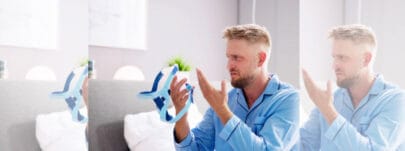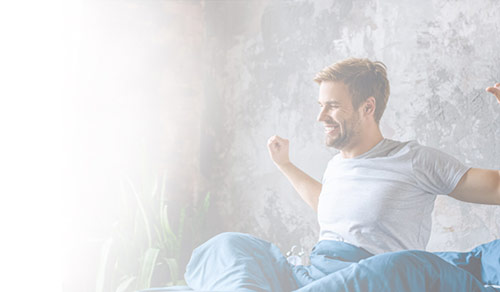
Still Tired with CPAP? Learn How to Maximize Your Hours Asleep
It can be argued that the CPAP (continuous positive airway pressure) device is the most important breakthrough in treating obstructive sleep apnea. Ever since its inception in 1981, this device has helped countless sufferers reduce the symptoms associated with apnea so that they can finally enjoy a solid night of rest.
In most cases, users should expect to witness a positive change within the first two weeks of using a PAP device. This is great news for those who are desperate for much-needed sleep or who have found other treatments less than effective.
However, what if you are not yet satisfied with the results? What if you’re still tired every day, despite using a PAP? There is no need to throw in the towel, as a handful of tips can go a long way. Let us examine some strategies that can be employed to obtain more relief.
Patience is a Virtue (Even When Sleepy)
One crucial aspect to remember — everyone will react differently to PAP devices. Some may respond after a single night while others may require longer time to adjust.
People with less severe sleep apnea may have more difficulty adapting, compared to more severe case – who fall asleep faster and aren’t as aware of wearing a mask – or the noise from the device.
This is why it is important to remain patient so your body can become acclimated to novel elements — such as the noise during operation and wearing a face mask.
If your symptoms have not noticeably improved after four weeks, it’s best to consult a sleep specialist.
Get Into the Habit
Humans are creatures of habit by their very nature. Just as we have all learned to embrace personalized sleeping habits over the years, adapting to a PAP device will require a bit of flexibility and discipline.
Experts therefore recommend that you use this device every evening. Your body and mind will then begin to adapt to its presence over time. If you instead only sporadically use the device, the chances are high that it will take much longer and the results may be slightly disappointing.
Consider the Fit of the Mask
The main purpose of this device is to deliver positive airway pressure (PAP) to your lungs during the overnight hours. The use of a face mask attached to a hose is therefore critical.
The only issue here is that some masks can be uncomfortable. There are also instances when an ill-fitting mask will cause air to escape. Make it a point to notice how the mask fits around your face – and whether you suspect air is leaking from the edges.
So, what if you encounter problems with the mask? You have a handful of options. Here are some alternatives to consider:
Nasal pillow masks are unique in the fact that they are less obtrusive when compared to a full face mask that covers the mouth and nose. They can be used by those who are claustrophobic or who may otherwise feel that a larger mask is uncomfortable.
Full face masks are generally prescribed for individuals who have not yet experienced the beneficial effects of nasal masks. These can likewise be advantageous if you have an obstruction (such as a deviated septum) that makes it difficult to breathe through your nose. Full masks provide increased air pressure to both the mouth and the nose.
Nasal masks are another option. These can be useful if you require air at a significantly higher pressure. As nasal masks are rather small, they can be suitable for those who tend to move around while asleep (there are fewer chances that the mask will accidentally come loose).
Consider the AutoRamp Feature
PAP technology has dramatically evolved over the past three decades — and one of the most recent advancements is the AutoRamp. Many individuals find it difficult to fall asleep when breathing in air at a higher pressure.
AutoRamp essentially functions by gradually increasing the pressure over time. This makes it much easier for the body to become adjusted as it begins to relax. Most quality PAP brand names now provide AutoRamp as a potential option, so be sure to consult with a specialist or a company representative.
Check for Additional Sleep Disorders
Always remember that you might be suffering from another condition that has not yet been detected. Some examples include:
- Narcolepsy
- Mild tinnitus
- Hypersomnia
While not common, this can happen – so you should discuss this with your sleep specialist. He or she can provide solutions for all of these conditions.
Never Take Your Lifestyle for Granted
On a final note, remember that relying on a PAP alone to alleviate your obstructive sleep apnea symptoms might not always produce the desired results.
Lifestyle choices are equally important. For instance, avoid the consumption of alcohol before heading off to bed. Smoking cigarettes can likewise exacerbate your symptoms and make treatments more challenging. Try to retire at the same hour every night, as your body will adjust its “internal clock” over time.
Eating a healthy diet, obtaining adequate levels of exercise, embracing a healthy diet, and losing excess weight are some additional suggestions to follow.
PAP machines have been proven to offer relief to countless individuals who grapple with the symptoms of sleep apnea. Still, appreciating the nuances of these devices and understanding the role that your lifestyle plays are just as relevant. For additional advice or inspiration, consult with a specialist.
Sources:
https://www.resmed.com/en-us/sleep-apnea/sleep-blog/living-with-cpap-7-tips-for-a-better-experience/
https://www.mayoclinic.org/diseases-conditions/sleep-apnea/multimedia/cpap-masks/sls-20076986
https://www.healthgrades.com/right-care/sleep-disorders/what-to-do-if-youre-using-cpap-but-still-tired



